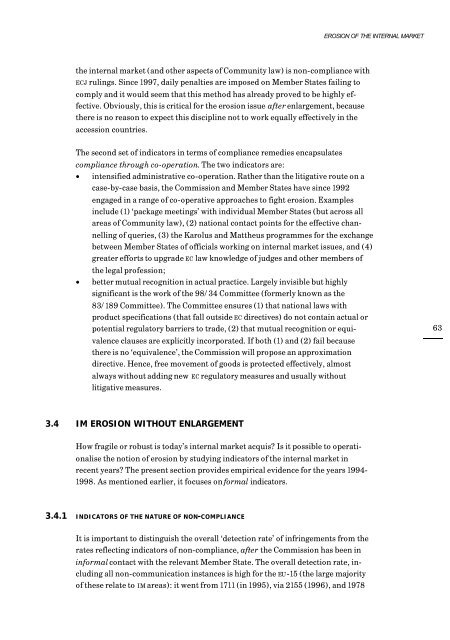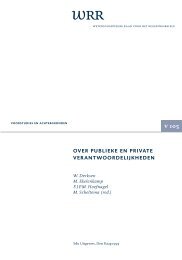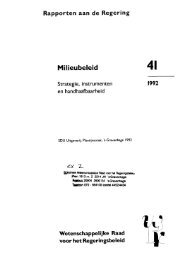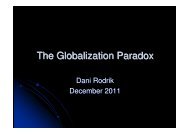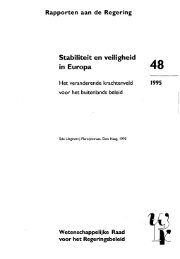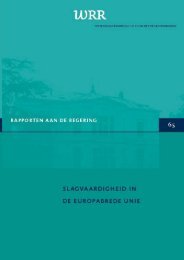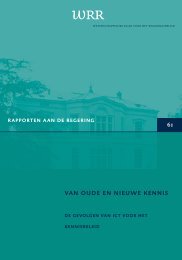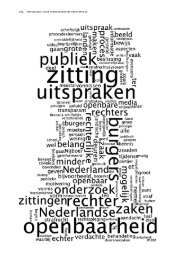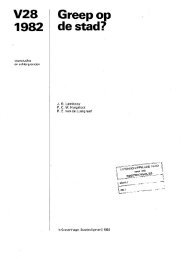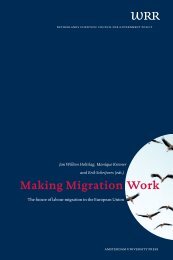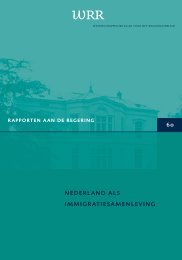w 109 long-run economic aspects of the european union's eastern ...
w 109 long-run economic aspects of the european union's eastern ...
w 109 long-run economic aspects of the european union's eastern ...
Create successful ePaper yourself
Turn your PDF publications into a flip-book with our unique Google optimized e-Paper software.
EROSION OF THE INTERNAL MARKET<strong>the</strong> internal market (and o<strong>the</strong>r <strong>aspects</strong> <strong>of</strong> Community law) is non-compliance withECJ rulings. Since 1997, daily penalties are imposed on Member States failing tocomply and it would seem that this method has already proved to be highly effective.Obviously, this is critical for <strong>the</strong> erosion issue after enlargement, because<strong>the</strong>re is no reason to expect this discipline not to work equally effectively in <strong>the</strong>accession countries.The second set <strong>of</strong> indicators in terms <strong>of</strong> compliance remedies encapsulatescompliance through co-operation. The two indicators are:• intensified administrative co-operation. Ra<strong>the</strong>r than <strong>the</strong> litigative route on acase-by-case basis, <strong>the</strong> Commission and Member States have since 1992engaged in a range <strong>of</strong> co-operative approaches to fight erosion. Examplesinclude (1) ‘package meetings’ with individual Member States (but across allareas <strong>of</strong> Community law), (2) national contact points for <strong>the</strong> effective channelling<strong>of</strong> queries, (3) <strong>the</strong> Karolus and Mat<strong>the</strong>us programmes for <strong>the</strong> exchangebetween Member States <strong>of</strong> <strong>of</strong>ficials working on internal market issues, and (4)greater efforts to upgrade EC law knowledge <strong>of</strong> judges and o<strong>the</strong>r members <strong>of</strong><strong>the</strong> legal pr<strong>of</strong>ession;• better mutual recognition in actual practice. Largely invisible but highlysignificant is <strong>the</strong> work <strong>of</strong> <strong>the</strong> 98/34 Committee (formerly known as <strong>the</strong>83/189 Committee). The Committee ensures (1) that national laws withproduct specifications (that fall outside EC directives) do not contain actual orpotential regulatory barriers to trade, (2) that mutual recognition or equivalenceclauses are explicitly incorporated. If both (1) and (2) fail because<strong>the</strong>re is no ‘equivalence’, <strong>the</strong> Commission will propose an approximationdirective. Hence, free movement <strong>of</strong> goods is protected effectively, almostalways without adding new EC regulatory measures and usually withoutlitigative measures.633.4 IM EROSION WITHOUT ENLARGEMENTHow fragile or robust is today’s internal market acquis? Is it possible to operationalise<strong>the</strong> notion <strong>of</strong> erosion by studying indicators <strong>of</strong> <strong>the</strong> internal market inrecent years? The present section provides empirical evidence for <strong>the</strong> years 1994-1998. As mentioned earlier, it focuses on formal indicators.3.4.1 INDICATORS OF THE NATURE OF NON-COMPLIANCEIt is important to distinguish <strong>the</strong> overall ‘detection rate’ <strong>of</strong> infringements from <strong>the</strong>rates reflecting indicators <strong>of</strong> non-compliance, after <strong>the</strong> Commission has been ininformal contact with <strong>the</strong> relevant Member State. The overall detection rate, includingall non-communication instances is high for <strong>the</strong> EU -15 (<strong>the</strong> large majority<strong>of</strong> <strong>the</strong>se relate to IM areas): it went from 1711 (in 1995), via 2155 (1996), and 1978


